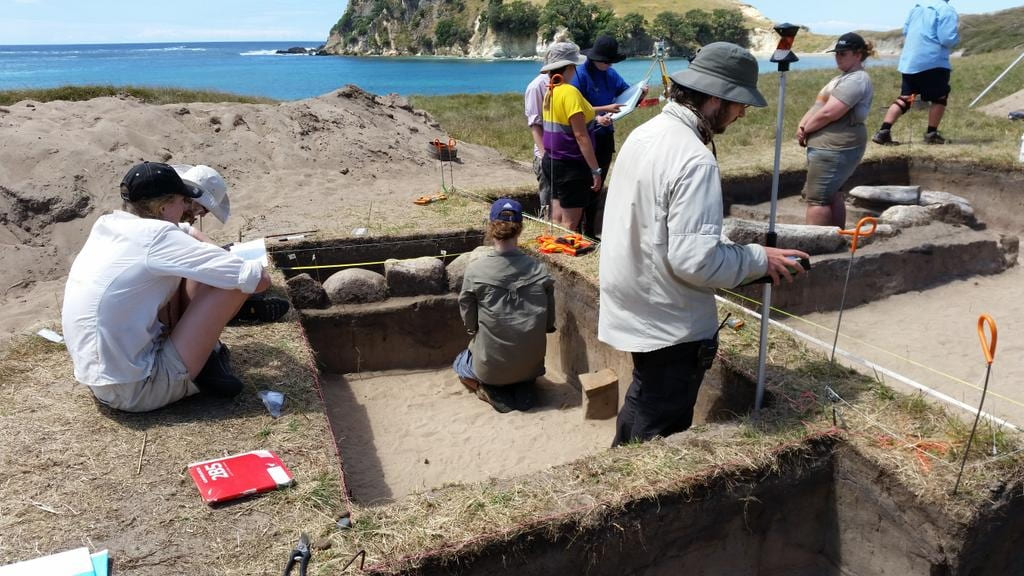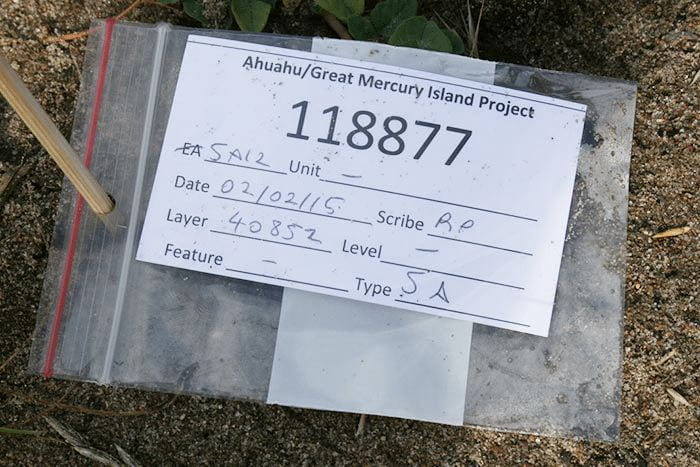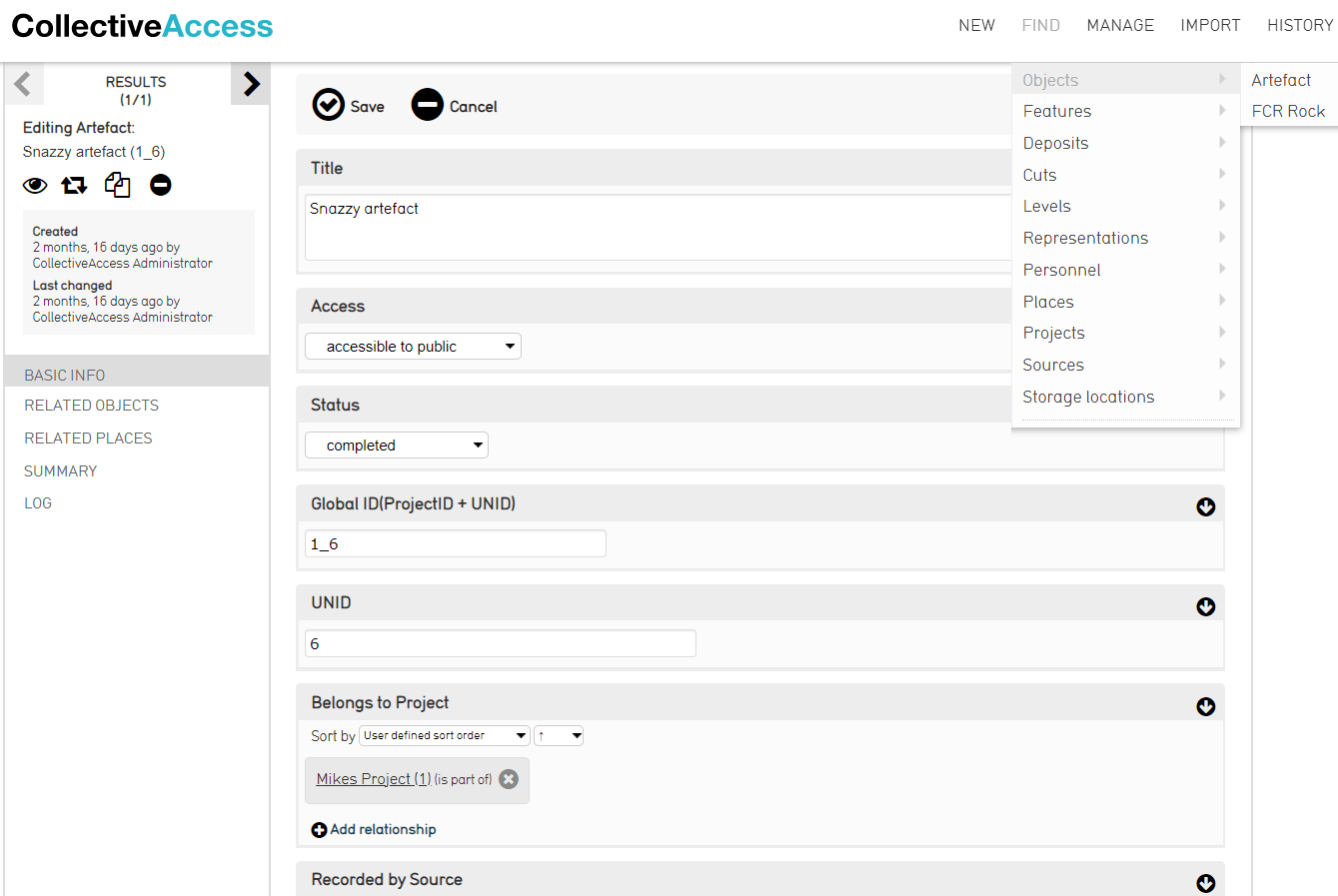
Ahuahu Great Mercury Island Online Database
Dr Joshua Emmitt, Research Fellow, Social Science; Dr Mike Laverick – Centre for eResearch

Background
Archaeologists are interested in human environment interrelationships over long spans of time and often engage in comparative analyses of these relationships. Data are compiled from a range of sources. The Archaeology eResearch Collaboration Initiative (ARCI) is a research group specialising in the management and analysis of data intensive archaeology. Currently the project is working with data from field projects in Egypt, New Zealand, Saudi Arabia, and Australia. These projects generate large amounts of data that need to be shared regularly between researchers around the globe.
Data acquired in the field consists of high resolution sampling of archaeological phenomena, recorded as a collection of geographic information with corresponding attribute information. It is not unusual for tens of thousands of observations to be collected during a field season. In addition, survey data can include photographs of archaeological features, including high resolution GigaPan imagery, and LIDAR point data. This data often includes complex file structures or large file sizes, the reading of which by specialist software such as ESRI’s ArcGIS are not easily shared in a structured way amongst researchers, both domestic and international. The Centre for eResearch provided access to the NeSI Data Fabric and customised servers which facilitated data sharing and collaboration, greatly increasing the productivity of the projects involved.
Using CollectiveAccess to collaboratively record and manage archaeological data
CollectiveAccess is an open-source software designed to help catalogue and publish data collections. It is used by a number of institutions, museums, and galleries around the world as both an internal platform to manage a wide range of collections and metadata, and also as a public-facing web platform to help present information on collections. CollectiveAccess implements its own intrinsic schema to broadly describe all major facets of a collection of data such as an object, object lots, collections, entities, places, media representations, and more. In addition to these broad descriptive tables CollectiveAccess allows you to create any amount of sub-schemas under its intrinsic schemas, as well as the ability to override and customise these intrinsic tables. Metadata fields and relational fields can be fully customised allowing CollectiveAccess, in addition to UI pages used to manage and explore data, allowing the software platform to be tailored to the needs of each specific deployment.
In tandem with the Centre for eResearch we are currently trialling a CollectiveAccess deployment, using the Nectar Research Cloud, specifically tailored to the needs of the Ahuahu Great Mercury Island project and more broadly the needs of the Archaeology eResearch Collaboration Initiative (ARCI). The CollectiveAccess deployment will be used to collaboratively record, manage, and explore archaeological data and metadata relating to the Ahuahu Great Mercury Island project. For example this will include metadata on the following, and much more:
- artefacts (various stones, shells, bones, etc)
- features (pits, postholes, ovens, walls, etc)
- the spatial and conceptual metadata relating to where the above were discovered (such as deposits, layers,cuts, structures, areas of interest, and more)
- people and entities involved in discovering and documenting the above
- media representations of the above (photos, videos, documents, shape files, etc)
- sources of media (Cameras, Drones, Tablets, Stations, etc)
We are currently in the process of implementing our project schema, previously co-developed with the Centre for eResearch here [1] and detailed further here [2], into a CollectiveAccess equivalent that can display and manage the project data and metadata in an intuitive manner. This process includes the creating CollectiveAccess sub-schema representations and corresponding UI pages to describe the schemas. In addition we are currently exploring how the CollectiveAccess software workflows can be used to ingest years of existing project data and metadata, as well as future excavation work. The Centre for eResearch is helping to document the process of sub-schema creation, metadata and UI customization, and the general technical process of installing, maintaining, and upgrading the CollectiveAccess instance for the eventual transition from trial to production.
_____________________________________________________
[1] https://www.eresearch.auckland.ac.nz/project/arci-archaeology-eresearch-collaboration-initiative/
[2] https://link.springer.com/article/10.1007/s10816-018-9399-6Annual Survey


See more case study projects

Our Voices: using innovative techniques to collect, analyse and amplify the lived experiences of young people in Aotearoa

Painting the brain: multiplexed tissue labelling of human brain tissue to facilitate discoveries in neuroanatomy

Detecting anomalous matches in professional sports: a novel approach using advanced anomaly detection techniques

Benefits of linking routine medical records to the GUiNZ longitudinal birth cohort: Childhood injury predictors

Using a virtual machine-based machine learning algorithm to obtain comprehensive behavioural information in an in vivo Alzheimer’s disease model

Mapping livability: the “15-minute city” concept for car-dependent districts in Auckland, New Zealand

Travelling Heads – Measuring Reproducibility and Repeatability of Magnetic Resonance Imaging in Dementia

Novel Subject-Specific Method of Visualising Group Differences from Multiple DTI Metrics without Averaging

Re-assess urban spaces under COVID-19 impact: sensing Auckland social ‘hotspots’ with mobile location data

Aotearoa New Zealand’s changing coastline – Resilience to Nature’s Challenges (National Science Challenge)

Proteins under a computational microscope: designing in-silico strategies to understand and develop molecular functionalities in Life Sciences and Engineering

Coastal image classification and nalysis based on convolutional neural betworks and pattern recognition

Determinants of translation efficiency in the evolutionarily-divergent protist Trichomonas vaginalis

Measuring impact of entrepreneurship activities on students’ mindset, capabilities and entrepreneurial intentions

Using Zebra Finch data and deep learning classification to identify individual bird calls from audio recordings

Automated measurement of intracranial cerebrospinal fluid volume and outcome after endovascular thrombectomy for ischemic stroke

Using simple models to explore complex dynamics: A case study of macomona liliana (wedge-shell) and nutrient variations

Fully coupled thermo-hydro-mechanical modelling of permeability enhancement by the finite element method

Modelling dual reflux pressure swing adsorption (DR-PSA) units for gas separation in natural gas processing

Molecular phylogenetics uses genetic data to reconstruct the evolutionary history of individuals, populations or species

Wandering around the molecular landscape: embracing virtual reality as a research showcasing outreach and teaching tool
























































































































































